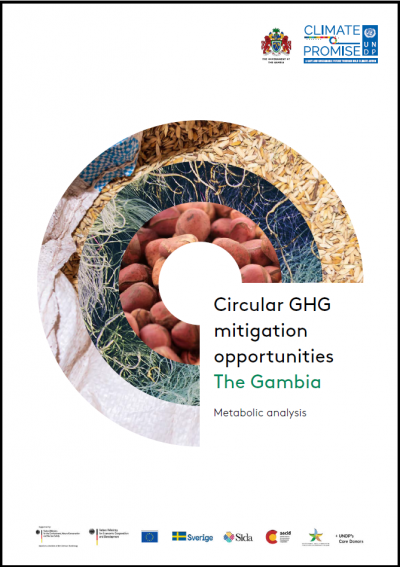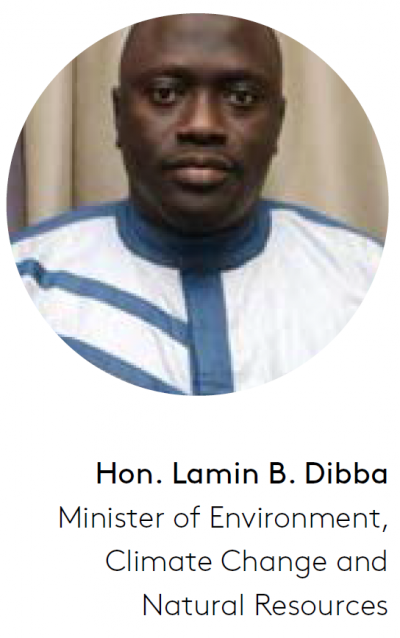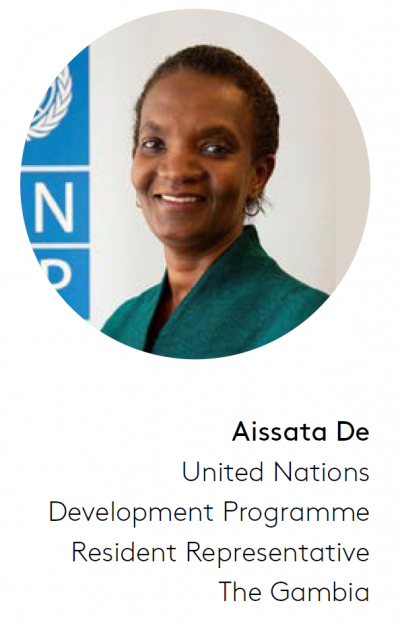The Gambia is enhancing its greenhouse gas mitigation pledge under the Paris Agreement with a metabolic analysis. The inclusion of new sectors through circular economy strategies allows the country to further raise the ambition of what already is the most ambitious Nationally Determined Contribution (NDC) under the UNFCCC.
Circular GHG mitigation
This report is the result of a comprehensive analysis of resource flows and their impact on the quality of natural assets in The Gambia. This met analysis served as the basis for a stakeholder process to identify circular greenhouse gas (GHG) mitigation opportunities. It is the first of its kind outside of the OECD context. The report supports an update of The Gambia’s GHG mitigation commitments under the Paris Agreement and has been developed with generous support from the UNDP Climate Promise programme.
Although this report focusses on the Gambian context, it aims to inspire other countries to choose a circular low-carbon development pathway that values regenerative materials, human resources, creativity and knowledge. By stepping away from growth models based on monetizing finite resources and overexploiting the commons, a circular low-carbon development pathway seeks to preserve natural assets to serve current and future generations alike.
Aligning with environmental and socio-economic development priorities
The Gambia’s environmental priorities are to improve climate resilience in the agricultural sector, protect watersheds by increasing the forest area under community management, and preserve natural assets by reducing waste accumulation and the excessive extraction of primary resources.
“Effective climate change mitigation is only possible when countries cooperate and take responsibility along value chains, even if these value chains extend far beyond national borders”
An accelerated transition to a circular economy should also be aligned with socio-economic development priorities. For The Gambia, these priorities are to create jobs; increase the country’s self-reliance by reducing the monetary trade deficit; expand the tax base; develop the private sector; and, strengthen the country’s position as a regional trade hub.
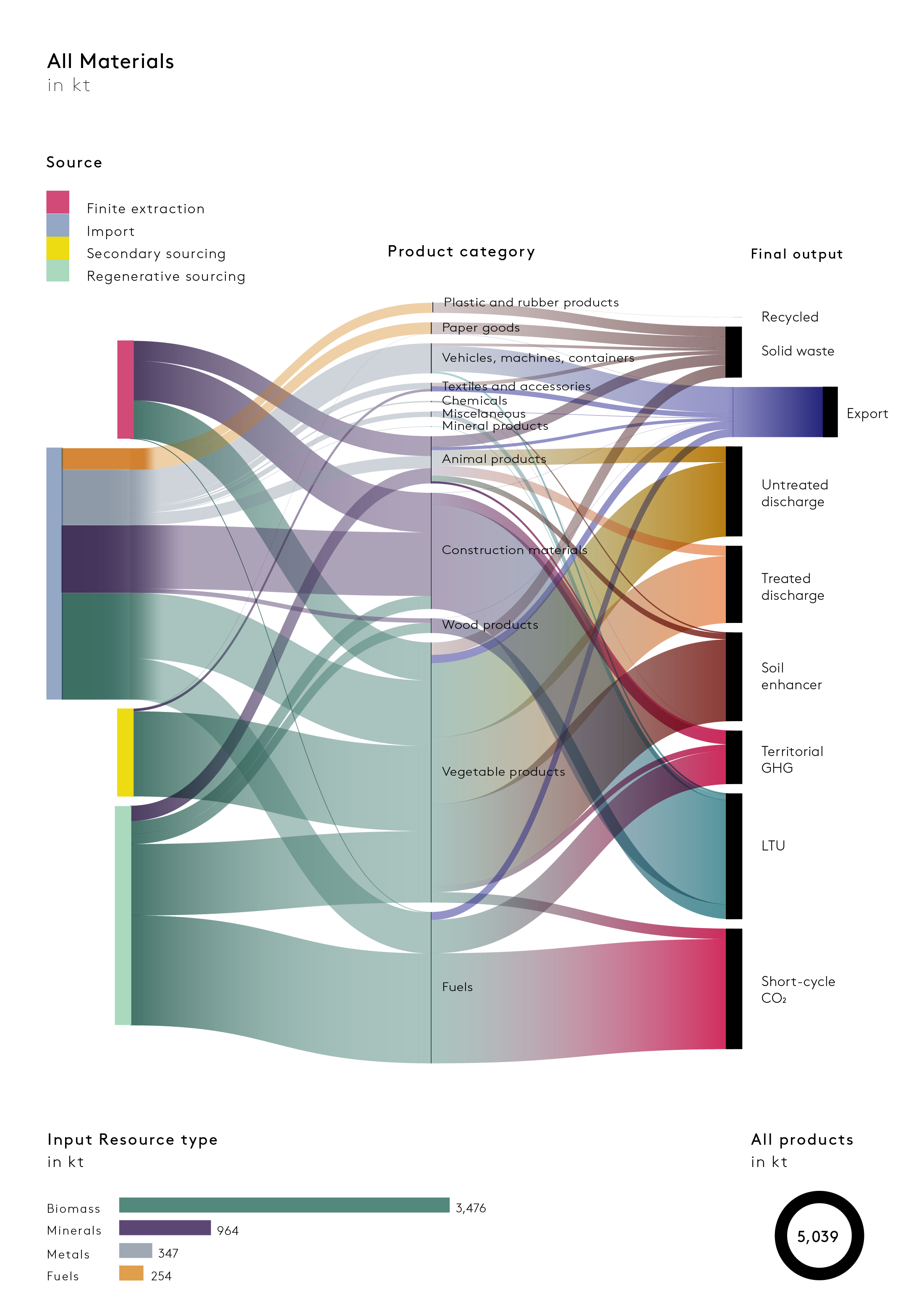
Systems analysis to connect climate action with key development priorities
Development is too often accompanied by a gradual decrease in the quality of ecosystems and the deterioration of natural resources such as soils, marine environments, fish stock and forest standing stock. The identification of circular economy opportunities for The Gambia combines an analysis of material use and flows with an analysis of trends in the quality and volume of natural assets. The analysis of stocks sheds light on whether the extraction and disposal of materials have a positive or negative effect on the ability of the country’s natural assets to regenerate and serve future generations. This report refers to that combined review of both flows and stocks as a metabolic analysis, while material flows are analysed both in material tonnes and in their embodied GHG footprint in tonnes of CO2 equivalents (tCO2e).
The objective is to identify GHG mitigation opportunities that extend beyond the climate mitigation commitments that The Gambia outlined in its first (NDC), or Paris Pledge.
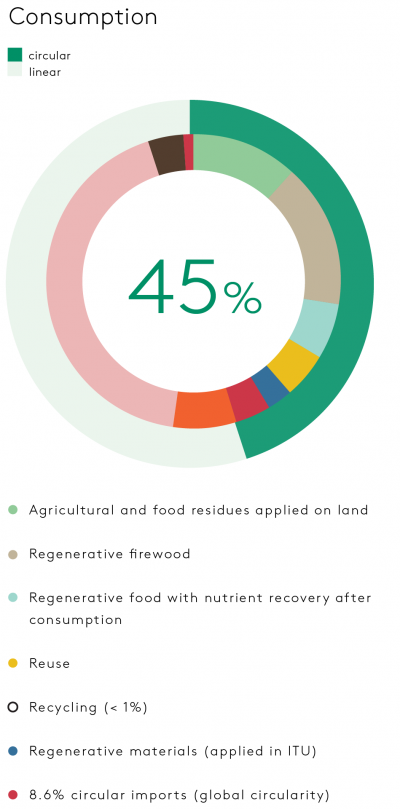
Consumption in The Gambia is 45 percent circular
The circularity of The Gambia has been calculated by distinguishing 251 national material flows and assessing whether each is circular or linear. The consumption-based circularity gap for The Gambia specifies the share of domestic consumption from renewable or secondary resources, and for which materials are recovered at the end-of-life phase. Consumption in The Gambia is estimated to be 45 percent circular. This is attributed primarily to largely sustainable and, even, partly organic agricultural and forestry sectors, the use of largely renewable firewood, materials recycling, product reuse, and the use of regenerative construction materials.
On the other hand, production in The Gambia is considerably more circular – estimated at 74 percent – than consumption. When analysing the circularity of production, imports are excluded and only products from The Gambia are accounted for, including those that are exported.
Imported goods and materials account for 25 percent of the consumption-based GHG footprint
Analysing the carbon footprint of consumption in The Gambia helps to prioritize interventions that can reduce the GHG emissions, whether they occur in The Gambia or elsewhere. For 2020, national GHG emissions are estimated at approximately 4.9 million tCO2e. Upstream emissions generated during the production of imported goods and materials total an additional 1.2 million tCO2e.
Around 85 ktonnes CO2e of territorial emissions are related to the production of goods and materials that are exported to serve consumers in other countries; some of them are re-exports.
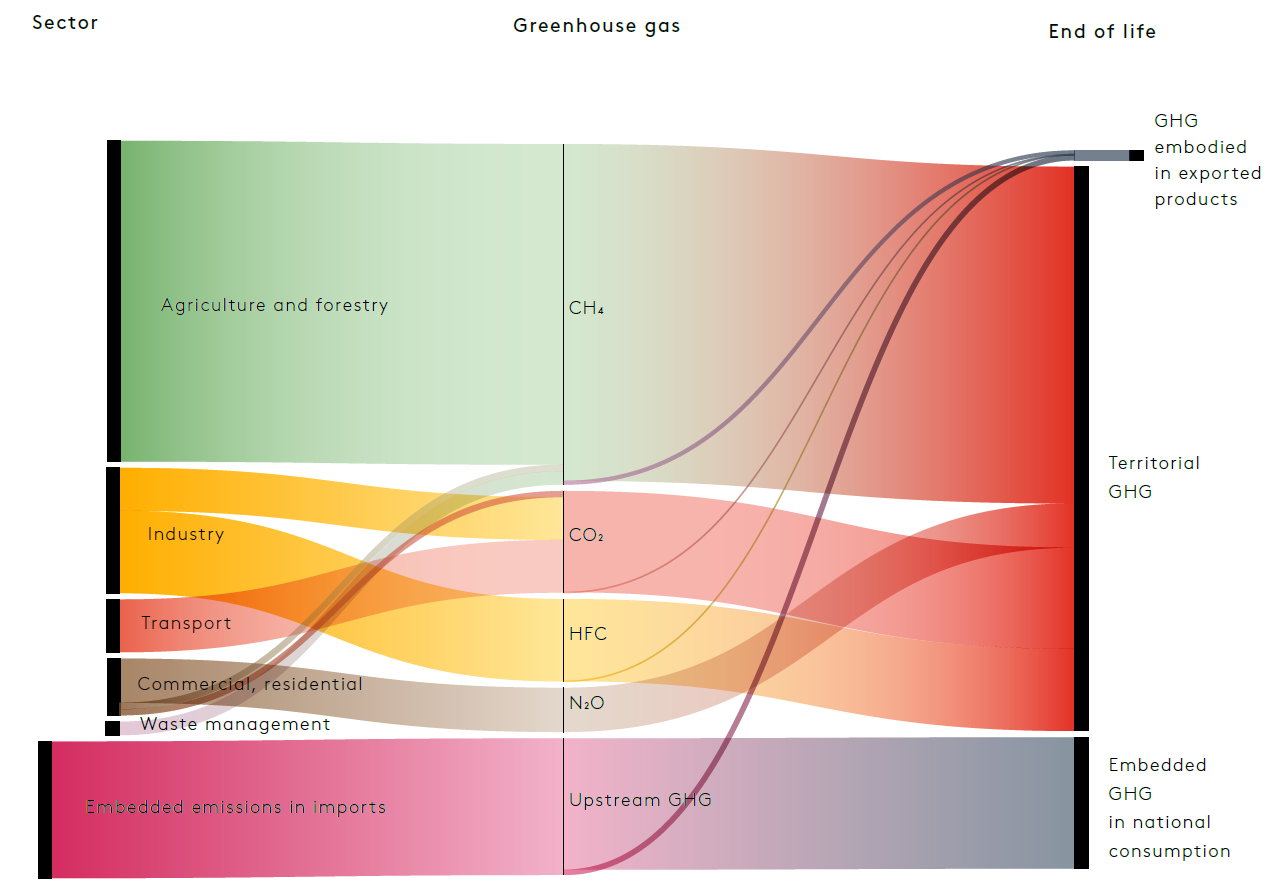
Circular GHG mitigation brings a net zero GHG economy within reach
The circular economy offers an opportunity for The Gambia to combine economic development and job creation with reduced GHG emissions, improved climate resilience and reduced reliance on imports. The circular economy can help safeguard and restore the quality of the country’s natural assets, notably the soils, forest stock and fishing grounds on which large parts of The Gambia population rely for their subsistence needs. In a circular future, the country should continue to prioritize sourcing materials from regenerative, rather than depletive, sources and avoid waste.
“The Gambian waste management system is not designed to handle many types of imported goods and materials”
The measures proposed in the first Nationally Determined Contribution, complemented by nature-based solutions proposed by UNDP and additional circular mitigation opportunities, can reduce GHG emissions in The Gambia from a baseline level of 6.4 GtCO2e to around 1.64 GtCO2e by 2030. This estimate accounts for overlap, as the first NDC included circular mitigation potential of 0.22 GtCO2e for the period 2021 to 2025.
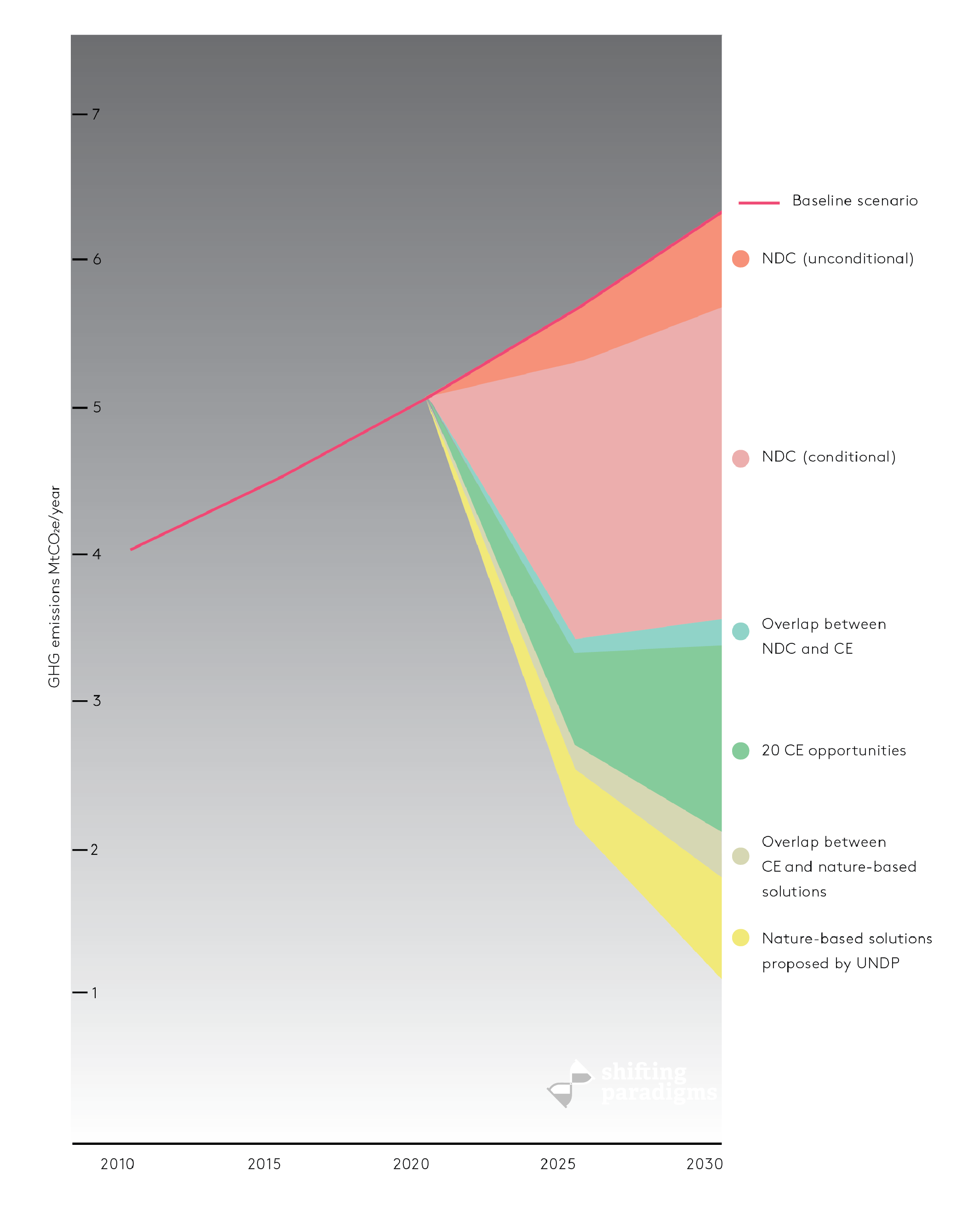
Twenty circular economy opportunities in The Gambia and their co-benefits
Twenty circular GHG mitigation opportunities are proposed within the sectors addressed. Taken together, they can reduce national GHG emissions by 36 percent, reduce The Gambia’s international carbon footprint by 38 percent and reduce national solid waste volumes by 37 percent. These percentages address only the sectors and GHG emissions within the scope of this analysis. The 20 opportunities would also lower government expenditures on fertilizer subsidies, shift the tax base away from labour to encourage job creation, and reduce the trade deficit by $116 million, or 7 percent of import volumes.
Combined with the measures already proposed in The Gambia’s NDC and nature-based solutions, such as peatland restoration and reforestation, total mitigation potential could reach 72 percent when disregarding overlap between the NDC and the circular greenhouse gas mitigation opportunities identified.
Six of the 20 circular GHG mitigation opportunities identified are in food value chains, representing 52 percent of domestic circular mitigation potential. In addition, 10 of the 20 opportunities have a high or very high job creation potential. The opportunities identified are structured by sector and then ranked based on their GHG mitigation potential within both The Gambia and international value chains. The co-benefits covered include the estimated potential impact on primary resource extraction, waste production, reduced reliance on imports and job creation.
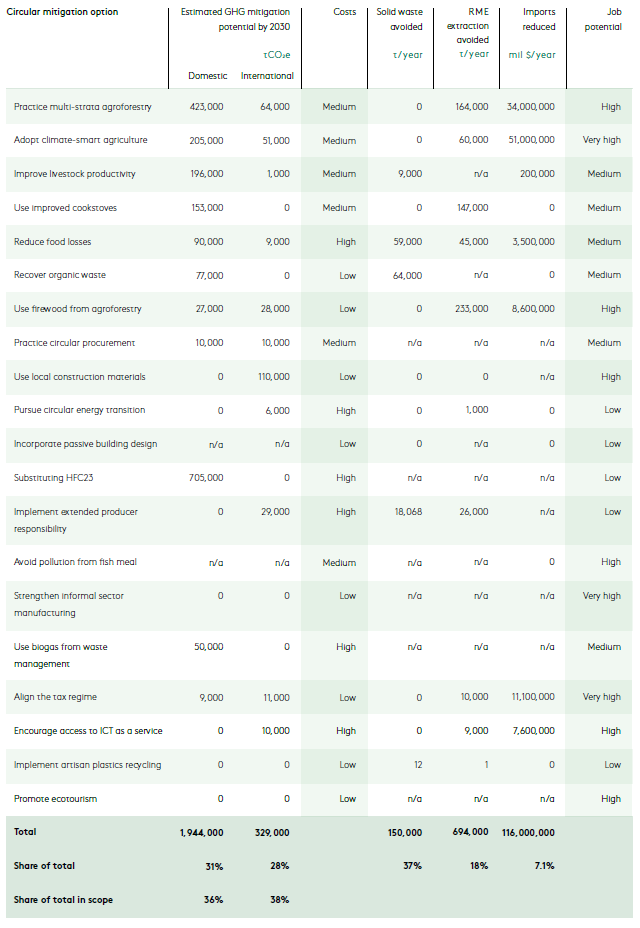
Donors:
Client: UNDP
Partners: Katim Seringe Touray, EnviroSense, Circular Vision, Energy Changes, Climate Focus, Subbarao Consulting Services Ltd
Media coverage: All Africa, IIED,
2020-21


